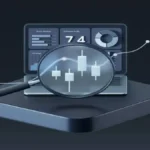If you’ve ever plugged in a diagnostic scanner and seen “P0420” flash across the screen, you’re not alone. In the first 100 words, here’s your answer: P0420 is an OBD-II diagnostic trouble code that stands for “Catalyst System Efficiency Below Threshold (Bank 1)”. It means your vehicle’s computer has detected that the catalytic converter—the component that reduces harmful emissions—isn’t performing as efficiently as it should. But the story behind that code goes deeper than a simple part failure. P0420 can point to a spectrum of issues: oxygen sensor errors, exhaust leaks, fuel imbalances, or even subtle aging in emission components. Understanding this code means understanding how modern vehicles think, breathe, and clean themselves.
🔧 P0420 Diagnostic & Efficiency Analyzer
Understand the P0420 code, discover causes, fixes, and estimate repair costs with live chart visualization.
🧩 Prevention Tips
- Use high-quality fuel to reduce carbon buildup.
- Replace oxygen sensors at manufacturer-recommended intervals.
- Fix misfires or exhaust leaks early to prevent converter damage.
- Avoid frequent short trips; maintain steady engine temperatures.
- Perform annual emissions system inspection.
What the P0420 Code Actually Means
To grasp P0420, you must first understand what a catalytic converter does. Located in the exhaust system, it transforms harmful gases—like carbon monoxide, nitrogen oxides, and hydrocarbons—into less toxic substances such as carbon dioxide and water vapor. Your car’s onboard computer (ECU) monitors this conversion process using two oxygen sensors: one before the catalytic converter (upstream) and one after (downstream).
When the converter works properly, the upstream sensor shows fluctuations in oxygen levels while the downstream sensor remains steady. If both sensors begin to mirror each other’s readings, the ECU concludes the converter isn’t filtering efficiently—and that’s when it triggers P0420.
A mechanic once described it this way: “P0420 isn’t always the problem itself—it’s your car’s way of saying something’s breaking down in the ecosystem.”
Common Symptoms of a P0420 Code
Though a P0420 code doesn’t usually stop your car from running, it’s a sign that efficiency is dropping. Drivers often notice subtle symptoms before the Check Engine Light appears.
Typical Symptoms
• Check Engine Light (CEL): The most common sign, often appearing intermittently at first.
• Reduced Fuel Efficiency: The engine may consume more fuel due to improper air-fuel balance.
• Rough Idle or Hesitation: Irregular combustion from sensor misreadings or exhaust leaks.
• Sulfur or “Rotten Egg” Smell: A telltale sign of a failing catalytic converter.
• Slight Loss of Power: Reduced exhaust flow affects performance.
Each symptom hints at inefficiency rather than catastrophe—but ignoring them could lead to expensive repairs down the line.
What Triggers the P0420 Code
The P0420 code doesn’t point to a single faulty component; rather, it reflects an imbalance in a system of interdependent parts. Common causes include:
Major Causes
• Catalytic Converter Degradation: The most frequent reason—internal catalyst materials lose effectiveness over time.
• Faulty Oxygen Sensors: A malfunctioning sensor can send false readings, confusing the ECU.
• Exhaust Leaks: Small leaks before the catalytic converter can alter oxygen readings.
• Fuel Mixture Issues: Running too rich or too lean affects exhaust composition.
• Engine Misfire or Oil Consumption: Contaminants damage the converter’s chemical coating.
• Faulty Spark Plugs or Ignition Coils: Poor combustion can cause unburned fuel to enter the exhaust.
As one emissions specialist said, “The converter is the messenger—it takes the blame, but the cause often lies upstream.”
How Mechanics Diagnose a P0420 Code
Diagnosis is as much art as science. Professionals use a structured process combining observation, data, and pattern recognition.
Step-by-Step Diagnostic Process
- Scan the Vehicle: Confirm the presence of P0420 and check for related codes (like P0130–P0167 for oxygen sensors).
- Inspect for Exhaust Leaks: Examine joints, gaskets, and manifolds for cracks or rust.
- Analyze Live Data: Compare upstream and downstream oxygen sensor voltage readings.
- Check Fuel Trim Values: Evaluate whether the engine is running too rich or lean.
- Inspect Spark Plugs and Coils: Misfires or carbon buildup can indirectly trigger P0420.
- Test Catalytic Converter Efficiency: Using an exhaust analyzer or infrared thermometer to measure temperature differential.
If the converter’s inlet and outlet temperatures don’t differ significantly, efficiency has dropped below acceptable levels.
Table: Common Diagnostic Outcomes and Solutions
| Cause | Diagnostic Sign | Recommended Fix |
|---|---|---|
| Failing Catalytic Converter | Similar readings from both O₂ sensors | Replace catalytic converter |
| Faulty Oxygen Sensor | Erratic voltage or no response | Replace affected sensor |
| Exhaust Leak | Visible soot or hissing sound | Seal or replace exhaust components |
| Rich/Lean Fuel Mixture | Abnormal long-term fuel trim readings | Adjust fuel system or clean injectors |
| Engine Misfire | Misfire codes (P0300 series) | Replace spark plugs or ignition coils |
This table helps drivers visualize the most probable culprits without assuming immediate replacement of expensive parts.
Understanding the Role of Oxygen Sensors
Oxygen sensors are the unsung heroes of emission control. The upstream sensor measures oxygen levels from the engine, helping adjust the fuel mixture. The downstream sensor monitors the converter’s performance.
A failing sensor can mimic a converter issue, sending false data that misleads the ECU. In some cases, simply replacing an old oxygen sensor clears the P0420 code. Yet, replacing sensors without diagnosis can be wasteful—many converters are replaced unnecessarily when a simple $60 sensor is the real problem.
“Most people change the heart without checking the pulse,” joked one veteran mechanic, emphasizing the importance of sensor testing.
The Chemistry Inside the Catalytic Converter
A catalytic converter isn’t a simple pipe—it’s a chemical reactor. Inside, honeycomb-shaped ceramic substrates are coated with precious metals like platinum, palladium, and rhodium. These materials trigger oxidation and reduction reactions that neutralize harmful gases.
Over time, exposure to unburned fuel, oil, or coolant residue can coat these metals, reducing their efficiency. This chemical contamination explains why short trips and cold starts accelerate converter wear—the converter never reaches optimal temperature to burn off residues.
Maintaining efficiency means maintaining the chemistry. Consistent driving, proper fuel, and engine tune-ups extend its life.
Cost of Repair and Replacement
Repair costs vary based on cause. While replacing a catalytic converter can range from $800 to $2,500 (depending on vehicle type), smaller fixes—like sealing exhaust leaks or changing oxygen sensors—may cost under $200.
Average Cost Breakdown
• Oxygen sensor replacement: $100–$300
• Exhaust repair: $150–$500
• Catalytic converter replacement: $1,000–$2,500
• Complete emissions system overhaul: $2,500+
In many cases, addressing upstream issues early prevents full converter failure. Timely maintenance can mean the difference between a $200 fix and a $2,000 repair.
Preventing P0420 from Returning
Prevention begins with understanding how driving habits affect the emissions system. The catalytic converter thrives on consistent heat, clean combustion, and balanced air-fuel ratios.
Preventive Tips
• Drive Longer Trips: Short commutes prevent converters from reaching optimal temperature.
• Use High-Quality Fuel: Prevents carbon buildup and contamination.
• Maintain Engine Health: Regular oil changes and spark plug replacements preserve efficiency.
• Inspect Sensors Periodically: Replace faulty sensors before they mislead the ECU.
• Fix Misfires Immediately: Unburned fuel is the catalyst’s worst enemy.
A preventive mindset transforms reactive car ownership into intelligent stewardship.
Can You Drive with a P0420 Code?
Technically, yes—your car will still run. But it’s not ideal. Continued driving with an inefficient converter increases emissions and risks overheating the exhaust system. Moreover, your vehicle may fail emissions inspections, and prolonged neglect can damage the engine.
In short: you can drive short distances, but you shouldn’t ignore the code for long. As one auto journalist put it, “A P0420 car is like a smoker with a cough—it still moves, but it’s warning you something’s wrong.”
How Mechanics Test Efficiency Using Temperature
A simple diagnostic trick involves measuring temperatures before and after the converter. A healthy converter runs hotter at the outlet because chemical reactions generate heat.
Expected Temperature Difference
| Condition | Inlet Temp | Outlet Temp | Efficiency |
|---|---|---|---|
| Normal | 400°F | 600°F | High |
| Degrading | 400°F | 450°F | Moderate |
| Failing | 400°F | 400°F or less | Low |
Temperature data, combined with oxygen sensor readings, gives an accurate efficiency profile.
P0420 in Hybrid and Modern Vehicles
In hybrids or vehicles with advanced emission systems, P0420 can behave differently. Frequent engine stop-start cycles prevent the converter from maintaining temperature, leading to false triggers. Modern vehicles use heated oxygen sensors and secondary air injection systems to counter this.
For hybrids, periodic long drives are essential. Extended engine-on cycles burn off deposits, stabilizing catalytic performance.
Myths About the P0420 Code
Because P0420 is common, myths surround it. Separating fact from fiction helps owners make better decisions.
Common Misconceptions
• “P0420 always means replace the catalytic converter.” Not always—sensor or fuel issues can mimic converter failure.
• “You can fix it by adding fuel additives.” Additives rarely repair underlying mechanical issues.
• “You can ignore it if the car runs fine.” Inefficiency may worsen silently and increase emissions.
• “Resetting the code fixes the problem.” The light may disappear temporarily but will return if root causes persist.
The smartest approach combines diagnosis with understanding, not shortcuts.
Environmental Impact of a Failing Converter
Beyond mechanical consequences, a bad converter undermines environmental responsibility. Vehicles with compromised converters release up to ten times more pollutants than normal. This not only affects air quality but also contributes to regulatory fines in some jurisdictions.
Automakers designed converters as a moral contract between performance and planet—maintaining them fulfills that responsibility.
DIY Approach: What You Can Safely Do
If you’re mechanically inclined, basic checks can be done at home.
Simple DIY Steps
• Inspect for exhaust leaks using soapy water on joints.
• Check for loose wiring on oxygen sensors.
• Use a code reader to monitor live O2 data.
• Verify temperature differences with an infrared thermometer.
• Replace the downstream oxygen sensor if readings are inconsistent.
However, deeper repairs—like replacing converters or reprogramming ECUs—are best left to professionals.
When to Seek Professional Help
If your diagnostics reveal multiple related codes (like P0171 for lean mixture or P0300 for misfire), it’s time for expert intervention. Complex problems require smoke testing for leaks, oscilloscope readings for sensors, or catalytic substrate inspection.
Professional mechanics have access to equipment and data libraries that reveal subtle patterns—an advantage worth paying for when uncertainty looms.
Technological Evolution: Smart Catalytic Converters
Next-generation vehicles use “smart” catalytic converters embedded with miniature sensors that report real-time efficiency to the ECU. These systems can self-adjust fuel mixtures, minimizing premature failure. Some even use predictive algorithms to warn drivers before efficiency dips below the threshold.
As emissions standards tighten, such advancements will make codes like P0420 less frequent but more precise.
Comparing P0420 with Related Codes
| Code | Description | Common Link |
|---|---|---|
| P0420 | Catalyst System Efficiency Below Threshold (Bank 1) | Primary converter inefficiency |
| P0430 | Catalyst System Efficiency Below Threshold (Bank 2) | Secondary converter inefficiency |
| P0130–P0167 | Oxygen Sensor Circuit Faults | Sensor malfunction affecting catalyst readings |
| P0171/P0172 | System Too Lean/Rich | Air-fuel imbalance affecting exhaust chemistry |
Understanding relationships between these codes paints a holistic picture of engine health.
The Emotional Side of Car Diagnostics
Seeing a warning light feels like a personal betrayal—especially when the car runs fine. But codes like P0420 remind us that machines communicate differently. Where humans describe pain, cars describe performance loss through data.
As one automotive psychologist humorously noted, “A Check Engine Light isn’t judgment—it’s confession.”
Owning a car today requires emotional literacy as much as mechanical understanding.
Long-Term Solutions and Sustainable Driving
Solving P0420 isn’t just about repairs; it’s about driving smarter. Sustained vehicle health reduces pollution, saves money, and extends engine life. Consistency—rather than perfection—is the real maintenance secret.
Sustainable Habits
• Regularly clean fuel injectors.
• Avoid idling for long periods.
• Use synthetic oil where recommended.
• Keep tire pressure optimal to reduce engine strain.
• Run full diagnostic scans twice a year.
Routine care prevents small inefficiencies from becoming large failures.
Quotes from Mechanics and Experts
- “Catalytic converters rarely die of old age—they’re killed by neglect upstream.” — Senior Technician, Midwest Auto Center.
- “The P0420 light is the universe telling you to listen to your car.” — Automotive Blogger.
- “If oxygen sensors are the lungs, the converter is the heart; both need clean air to function.” — Emissions Engineer.
- “Driving with P0420 isn’t rebellion—it’s ignorance dressed as convenience.” — Environmental Policy Advocate.
Conclusion
The P0420 code is one of the most misunderstood alerts in automotive diagnostics. It’s not just a technical glitch—it’s a conversation between your vehicle’s brain and its lungs, telling you something in the ecosystem is faltering. Whether it’s a tired catalytic converter, a misbehaving sensor, or a minor leak, addressing the issue restores harmony to your engine’s internal balance.
In the end, understanding P0420 means understanding that efficiency is both mechanical and moral—caring for your vehicle is caring for the environment it moves through. A car that breathes cleanly drives not just better, but with conscience.
FAQs
Q1: What is P0420?
It’s a diagnostic code indicating catalytic converter inefficiency on Bank 1 of the exhaust system.
Q2: Can I clear the code myself?
Yes, but it will return if the underlying issue isn’t fixed.
Q3: How serious is P0420?
Moderately serious—it won’t stall your car but signals reduced emission control and potential engine strain.
Q4: How long can I drive with it?
Short-term driving is fine, but prolonged neglect risks costly repairs.
Q5: Will replacing the converter fix it?
Only if the converter is genuinely faulty; otherwise, inspect sensors and engine performance first.











